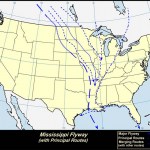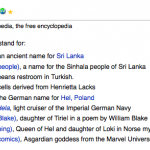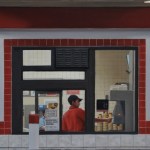NatureLand: What They Used to Call the Environment
I have a small part in a show called SACRED WASTE which was created by LSU Ph.D. student Bonny McDonald – which is playing in the upcoming New Orleans Fringe Fest. The show involves dance, poetry, ritual, elaborate costumes (made of 100% recycled plastic), and explores many aspects of the relationship between humans and plastic – including the manufacture of it here in Louisiana, and some introductory polymer chemistry! SACRED WASTE was one of 30 shows jury selected to play in the New Orleans Fringe Festival (out of > 200 entries).
This performance art show is a unique…
Image: Nagoya Congress Center plus Millenium Falcon reworked from original photo by Paula Pedrosa. link.
Originally made for a series of Nagoya COP10 primers at Boing Boing (1 | 2 | SB | 3 | 4)
I: SORTING OUT THE VERNACULAR
So what is up with this Nagoya thing? Well, it's a big international meeting that is happening in Nagoya's Congress Centre (see the picture above), starting on October 18th and lasting until the 29th. No doubt, you weren't necessarily lured into finding out more by the conference's bouncy theme song. You certainly weren't intrigued by the reams of official documents,…
BP has released the first slug of oil-spill hush money to LSU: $2 million for research on the Effects of the Oil Spill and it's Cleanup. Sounds like a lot of research money, until you realize that LSU does about $200 million dollars of research a year. So, it's kind of like if your next door neighbor (the one who knocked down his house and opened a strip mine) came over to your house and crapped in your refrigerator on $200 worth of groceries you just bought, then gave you two dollars so you could look into what effect his actions had on your food (and so you would feel good about him again…
By some estimates, more than 40% of the birds that seasonally migrate in North America do so via the Mississippi Flyway. Large numbers of both land and water birds use this route, including ducks, geese, blackbirds, sparrows, and numerous shorebirds, along with the rare white pelicans that migrate right through Baton Rouge each year. Most of the birds on the flyway cut right across the Gulf of Mexico. The Mississippi Flyway is what has given the Gulf Barrier Islands some of the richest bird species diversity in the world. Won't those silly birds be surprised at the burning slick of death…
I've started to write a few different posts in the past few weeks, but their different topics just don't seem to matter in the face of the death of the Gulf of Mexico, especially the affectionately named Redneck Riviera - Louisiana, Mississippi, Alabama, and the Florida Panhandle - these areas are most assuredly dead. Field researchers from LSU who have been on the coast in the past few weeks say that these shorelines will be dead for decades, no question, and that we still don't know how much longer it will go on, and consequently how much farther it will extend.
There numerous excellent…
A few months ago, for fun, I took a course on "Writing Books for Children." It was pretty good, in that it kind of forced me to sit down and come up and work through an idea. Or at least, work through it enough so that it was close to the stage of maybe querying publishers.
For readers who have followed this blog for a while, you probably know that children's books have always fascinated me, especially with two young children in my own household. It's probably why I've written about it on occasion (see here, here, here, and here for examples). There's something altogether amazing when you…
Recently, I was on Australian radio doing a bit about the phylomon project and one of the creatures that the host brought up was the Kakapo.
As well, an article at the Escapist was just published (again on the phylomon project), and within the comments there, the Kakapo was highlighted once again.
What is it with this bird that delights the imagination of biology enthusiasts? Well, first you have to check out this video, which is maybe one of the funniest things I've ever seen.
Anyway, I think Douglas Adams and Mark Carwardine describe the kakapo best in their wonderful book, "Last Chance…
This is straight from the main page:
Things are humming along! We have over 100 images submitted, 30 or so queued up for card production, and over 40 folks signed up on the forum (in fact, one set of rules is arguably close to beta testing). The response has been simply wonderful, and these numbers don't even the include the numerous comments and chats culled from coffee meetings to blog posts to tweets. To us, this outpouring is something else, especially in light of the fact that we've technically only seeded an "idea" out there!
The website, itself, is being prodded, poked and tweaked as…
In case those of you (the 2 or so readers we have here) are anxiously waiting for the song on biodiversity that I promised a while back. Well, I'm still working on it (partly things have been busy, also partly I had some new recording hardware to figure out). Anyway, just to show that I haven't been slacking off, here is a draft of the lyrics:
The main body of lyrics being:
There's you and me, within biodiversity
Connecting us together in this world.
But you can't see, it all works so majestically
Almost imperceptively - day by day
Look around yourself and you will find them everywhere…
Well, now it can be used for the Phylomon project. You know, the one where we're hoping we can guide an open source project into a free and massive card collecting game that is fun and even perchance (oh no, here it comes...) educational.
Now that we're at a stage where we're confident that the mechanics of obtaining images is sound (check out the submissions pool here, and the few from this pool that we've already lined up for beta testing as shown below), we're ready to move onto other crucial components of the project.
Namely gameplay and content on the card.
In many ways, we think these…
Although it's not Dr. Forbin's Colossus (one of the first AI systems to attempt to destroy the world on film --note the "on film" please), it is quite irritating, and the result might eventually be the same: We recently replaced our oven - why? the computer went out on it. We recently replaced our washer -- it was quite difficult to find a new washer without a computer in it, a computer that would be exposed to warm, wet vibrational conditions every day. We just disconnected the waterbath from our microcalorimeter - why? the on-board computer that controls the $ 3K water bath went out and…
If so, you should join this facebook group. Or to discuss further, please go to http://friendfeed.com/phylomon.
Here's part of what started this group and project: a friend of mine passed on this "letter to Santa:"
It quite nicely demonstrates an issue with advocates of biodiversity - that is, what can we do to get kids engaged with the wonderful creatures that are all around them? They obviously have the ability and the passion to care about such things, but it appears misplaced - they'll spend a ton of resources and time tracking down fictional things, when they could easily do the same…
Was it one of these (From wiki)?
In any event, hopefully you picked the one about Henrietta Lacks. If you didn't: then you really need to get yourself a copy of this book, entitled The Immortal Life of Henrietta Lacks and written by Rebecca Sloot, to find out why you should have.
I've just pre-ordered it, and am looking forward to reading it. The advance reviews are really good, and the story of Henrietta is really one that needs to be spread widely (this is speaking as someone who use to be pretty deep into the signal transduction field where use of HeLa cells is pretty much par for…
Hope everyone had a nice holiday, but I guess it's now back to the grind with a brand new year. For myself, I'm pretty stoked with a number of things coming up that will focus on this thing we call "Biodiversity."
And why is this? Well, basically, 2010 has been declared by the United Nations as the International Year of Biodiversity.
I also think it's going to be an interesting year for me coming up, because of the following:
1. Yesterday, whilst driving home from work and going a good 50 or so clicks on the road, a squirrel ran out in front of me in such a way that it entered somehow in…
These never got formalized into an official series (not to demystify it too much, but that formalization process requires mostly that Dave make an icon to put on the sidebar). Nevertheless, they ended up as an eight-part set of posts about landscape art of various types. I'll put a representative sample from each one below, each one clickable back to the original post. For clicking duplication, that first set (of western U.S. landscapes), ran in October 2008; the last, and most appropriate for this blog (it was about World's Fairs) ran this past June. I loved these.
Series #8: The World's…
Halfway there. This one first ran earlier this year, back in February. I was actually preparing for an interview, sitting in a bed and breakfast when I posted it, as I recall, which in retrospect makes it yet more meaningful to me. It was snowing, picturesque, comforting. Now a memory.
I had the chance to see a talk by William Cronon last week here at U.Va. He's a professor at the University of Wisconsin and a recognized world leader in environmental history and environmental studies. His work, while helping define the field of environmental history as it became one in recent decades,…
Lately I've been wondering if everything going on in the world of climate change has been done just for the benefit of ASIC 200, a course I co-teach which goes into the heady arena of climate politics. It's like you can't make this stuff up.
Just hot off the presses at the Guardian is news about a leaked document called "The Danish Text." It's essentially a primer document made to help speed things along at Copenhagen, but its optics also look like that of a "let's see if we can move the process out of the UN and into the hands of the more affluent countries."
The Guardian points out that:…
(hattip to Nick at terry.ubc.ca)
Coming off of Ben's recent hat tip to the paper published at PLoS ("The Progressive Increase of Food Waste in America and Its Environmental Impact"), I was reminded of some great artwork by Marc Trujillo.
I first heard of this artist by reading a nice profile of his work at a newish online literary journal called "/ONE/" (link).
Marc Trujillo is an urban landscape painter who depicts the big box retail stores, self-service gas stations, and fast-food chains that make up a large portion of the urban environment. Free of political or moral overtones, these works function both as modern…
This would be the headline from 25 years ago at Bhopal, India, when the Union Carbide plant there leaked a toxic cloud of methyl-isocyanate. My headline is indicative of the complexity of this disaster: the causes, responses, and historical path since then of regulation, cross-national legislation, and corporate attempts (or lack thereof) at responsibility to the communities where they operate are not straightforward. The company in question, Union Carbide, attempted at the time to claim it wasn't their fault (that it was sabotage). Never mind that a mere six months later, a similar…








